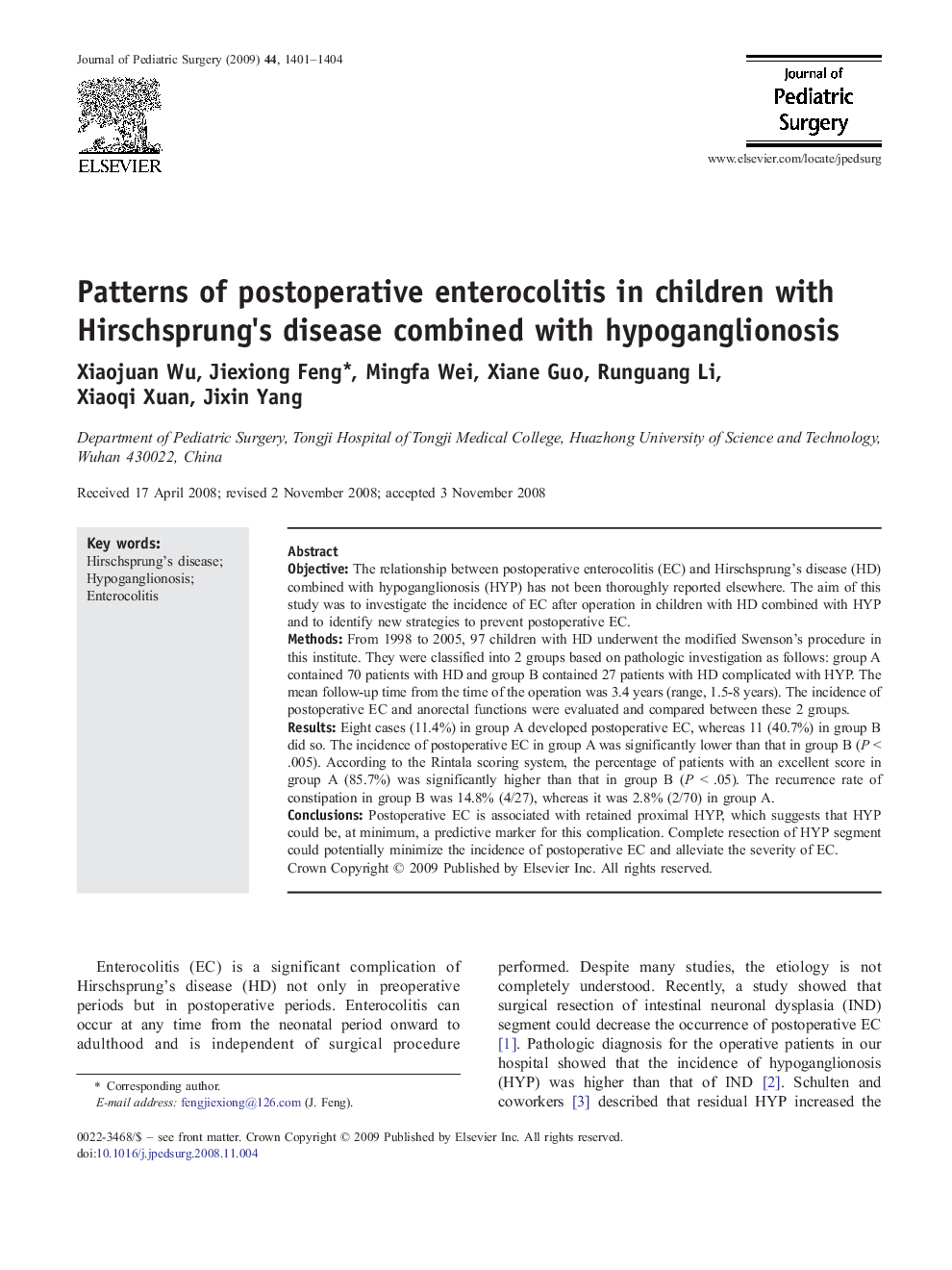| Article ID | Journal | Published Year | Pages | File Type |
|---|---|---|---|---|
| 4158026 | Journal of Pediatric Surgery | 2009 | 4 Pages |
ObjectiveThe relationship between postoperative enterocolitis (EC) and Hirschsprung's disease (HD) combined with hypoganglionosis (HYP) has not been thoroughly reported elsewhere. The aim of this study was to investigate the incidence of EC after operation in children with HD combined with HYP and to identify new strategies to prevent postoperative EC.MethodsFrom 1998 to 2005, 97 children with HD underwent the modified Swenson's procedure in this institute. They were classified into 2 groups based on pathologic investigation as follows: group A contained 70 patients with HD and group B contained 27 patients with HD complicated with HYP. The mean follow-up time from the time of the operation was 3.4 years (range, 1.5-8 years). The incidence of postoperative EC and anorectal functions were evaluated and compared between these 2 groups.ResultsEight cases (11.4%) in group A developed postoperative EC, whereas 11 (40.7%) in group B did so. The incidence of postoperative EC in group A was significantly lower than that in group B (P < .005). According to the Rintala scoring system, the percentage of patients with an excellent score in group A (85.7%) was significantly higher than that in group B (P < .05). The recurrence rate of constipation in group B was 14.8% (4/27), whereas it was 2.8% (2/70) in group A.ConclusionsPostoperative EC is associated with retained proximal HYP, which suggests that HYP could be, at minimum, a predictive marker for this complication. Complete resection of HYP segment could potentially minimize the incidence of postoperative EC and alleviate the severity of EC.
